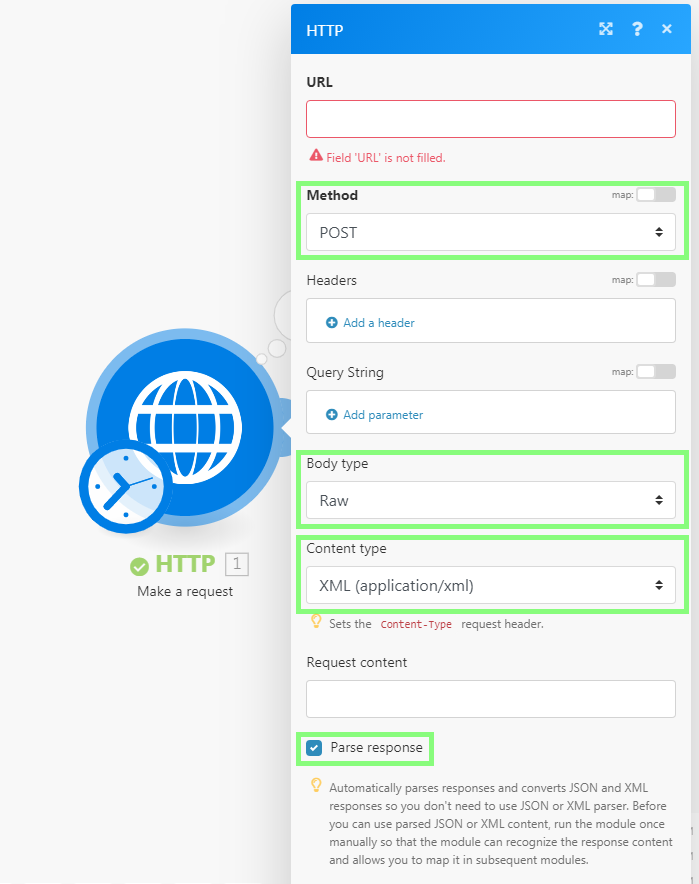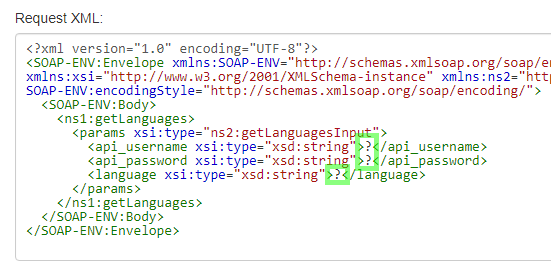SOAP
Supported features
The SOAP module is currently in beta and does NOT support:
Custom XML Schema elements are defined with the help of SOAP Encoding (http://schemas.xmlsoap.org) schemas and elements. For example, the following would not be recognized correctly by Make:
<complexType name="ArrayOfFloat"> <complexContent> <restriction base="soapenc:Array"> <attribute ref="soapenc:arrayType" wsdl:arrayType="xsd:integer[]"/> </restriction> </complexContent> </complexType>It includes the
soapenc:Array,soapenc:arrayTypeandwsdl:arrayTypereferences, which are not yet supported in Make.Redefine elements
Fraction digits restrictions
Total digits restrictions
White space restrictions
Multiple parts in input and output messages. Only single-part messages are supported
Workaround
If the SOAP module refuses to process the WSDL file or throws various errors in the module's configuration, you may try using the universal HTTP > Make a request module instead:
In Make, create a new scenario.
Insert the HTTP > Make a request module in the scenario.
Open the module's configuration and configure it like shown below:

Open a new web browser window/tab.
Paste the WSDL URL into the web browser's address bar and fetch the XML file. The WSDL URL usually ends with
?wsdl, but not necessarily, e.g. http://voip.ms/api/v1/server.wsdlIf the WSDL file does not display directly in the web browser, open the downloaded file in a text editor.
Search for the
<service>or<wsdl:service>tag:
Once located, copy the URL from the
locationattribute.In Make, paste the URL into the HTTP module's URL field.
Open the Online SOAP Client in a new web browser window/tab.
Paste the WSDL URL into the WSDL URL field.
Click on the Browse button.
Pick from the list of functions to the left, e.g.
getLanguages.Copy the content of the Request XML text area.
In Make, paste the copied content to the module's Request content field.
Provide values for selected parameters by replacing the question marks with actual values:

Close the module's configuration by clicking on the OK button.
Execute the scenario/module.